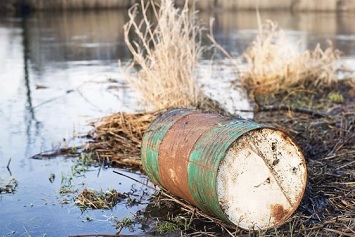One of the main goals of ex-EPA Administrator Scott Pruitt was development and implementation of measures to expedite removal of sites from Superfund’s National Priorities List (NPL) and returning those sites to economic productivity. A significant step in this process was 42 recommendations to improve Superfund issued in July 2017 by a Superfund Task Force formed by Pruitt. Based on the EPA’s newly released 1-year report, which also lists goals for the second year, Andrew Wheeler, who followed Pruitt as acting administrator, appears to have adopted Pruitt’s ambitions for the Superfund program.

“The report outlines next steps for all open recommendations and emphasizes a continued commitment to engage partners and stakeholders at all levels in making cleanup and land revitalization decisions that will provide future generations with a cleaner and healthier environment,” writes Wheeler in his introduction to the report.
10 Deletions in 2018
Pruitt’s main goal to improve Superfund was reducing the extensive periods of time sites languished on the NPL. Some of the actions taken in the first year included development of an “Administrator’s Emphasis List” comprising 21 sites from across the United States that the EPA targeted for “immediate and intense attention,” development of an online Human Exposure Dashboard that provides “real-time” determinations of human exposure status for all NPL sites, provision of more focused EPA resources toward providing technical support for site projects and expediting remedial designs and remedial actions, and cooperating with the Department of Justice on liability issues to make sites more appealing to third-party developers.
Much of this work and additional implementation of the 42 recommendations is still in the early stages. The EPA now reports that the Superfund program achieved two full site deletions and four partial deletions in 2017, and as of July 1, 2018, it has accomplished five full deletions and one partial deletion. The report states that the Agency is on track for 10 or more deletions in 2018.
Awards for Vendors
“In Year 2, EPA will finalize implementation of all the recommendations designed to expedite reduction of risks to human health and the environment and accelerate the reuse of properties,” the Agency states in the report. Top objectives for the second year include:
- Implementing a Remedial Acquisition Framework (RAF), a series of multiple award, indefinite quantity contracts to be competitively awarded in 2018 and 2019. When the RAF becomes operational, the Agency will expand the pool of vendors available for Superfund remedial program activities.
- Placing greater emphasis on internal tracking of site progress using visual management tools to evaluate where the site is in the Superfund process, how long it has been there, and reasons for any delays.
- Making wider use of adaptive management. The Task Force defined this term as “an approach used at large and/or complex sites that focuses limited resources on making informed decisions throughout the remedial process.” The practical goal is to return portions of sites to use pending more detailed evaluations on other parts of sites.
- Collaborating with the Association of State and Territorial Solid Waste Management Officials (ASTSWMO) to complete a thorough evaluation of groundwater beneficial use policies with a focus on beneficial use determinations.
- Continuing to reinvigorate potentially responsible party (PRP) cleanup and reuse by compiling best practices to reduce negotiation and PRP-lead cleanup time frames and modifying model agreement language to speed up time frames and provide financial incentives in the form of reduced oversight when appropriate.
Other leading goals for the second year include encouraging more private party investment in reuse of contaminated sites, tracking and supporting development opportunities, providing more information to potential developers and communities with Superfund sites, and engaging more with all stakeholders.
The EPA’s second-year report is here.
